Death Stranding Review
Death Stranding Review
The debut project from Kojima Productions is unlike anything we've seen before
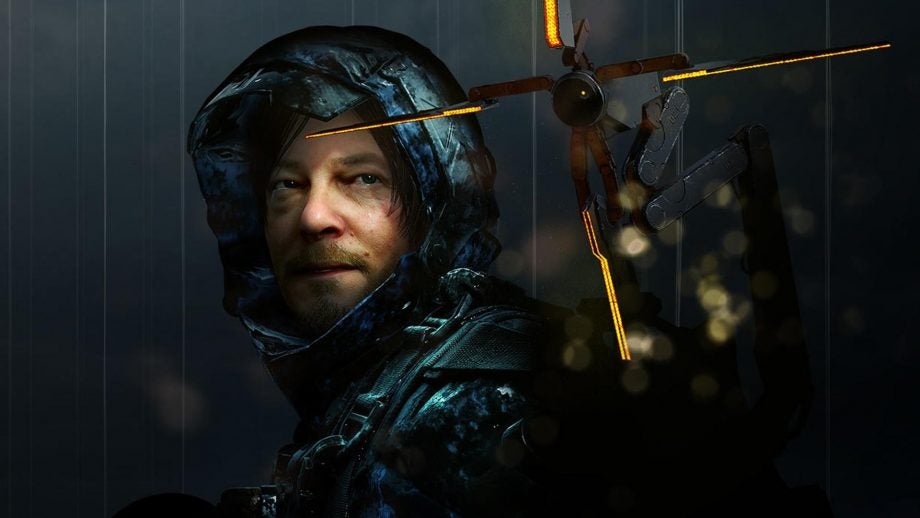
Verdict
Death Stranding is unlike anything else out there right now. It's huge, innovative and utterly unashamed in what it wants to be. Kojima Productions is heavy-handed in its implementation of modern political themes, but they tie into the narrative and involve the player in ways that feel compelling.
Pros
- One of the most original games of this generation
- A scary, melancholic and inviting world to explore
- The characters are strange, layered and interesting
- Mechanics all compliment each other brilliantly
- Social interaction system is genuinely innovative
Cons
- Boss battles can be somewhat frustrating
- A few plot threads remain unanswered
Key Specifications
- Review Price: £49.99
- Developer: Kojima Productions
- Platforms: PS4, PC (coming in 2020)
- Release Date: November 8, 2019
Death Stranding PC Review
Hideo Kojima’s Death Stranding made a polarizing impact on PS4 back in November of last year, and now it’s abandoning its roots as console exclusive with a stellar version of the game on PC.
Developed internally at Kojima Productions, the Japanese studio has gone above and beyond to ensure this is the definitive version of the unusual epic for those with the gaming machines to keep up with it. That being said, my PC is far from top of the range, but still managed to run things at a consistent performance at resolutions beyond the PS4 original.
The core premise of Death Stranding is oddly more fitting now than when it first released. It depicts a world overcome by a deadly invisible force which has sent the world’s entire populace indoors out of survival, while couriers such as Sam Porter Bridges are chosen as valuable transporters of resources across major settlements.
This is your role in Hideo Kojima’s post-apocalyptic world, an experience that is both thrilling and boring in a weird, subversive way when compared to other modern platformers. There’s simply nothing else like it, and for that very reason I adore it. Returning to it with this new and improved port after stewing on its world and themes for a number of months is wonderfully sobering, and a nice break from some of this year’s blockbusters.
Related: Best PC Games
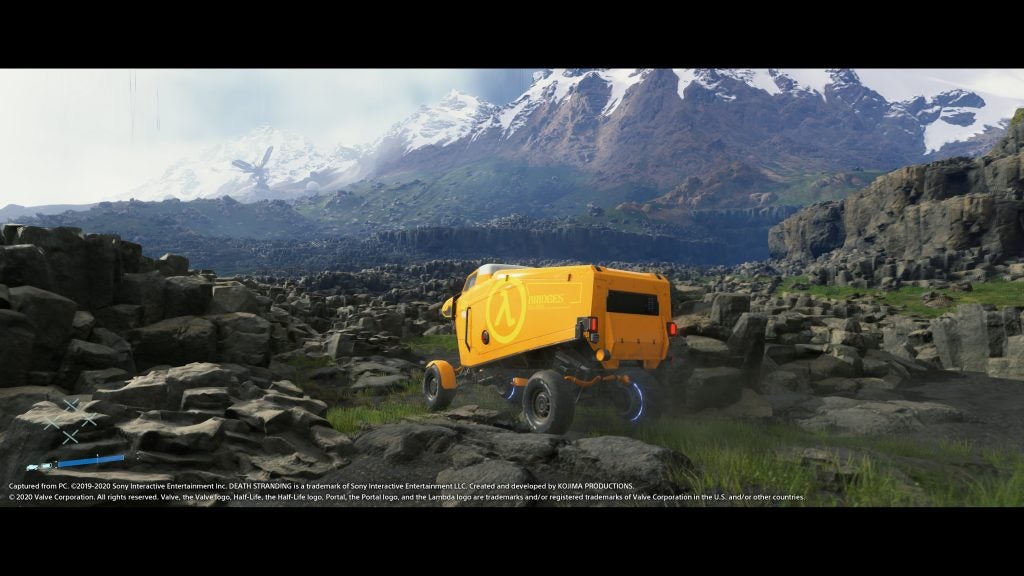
This port is an accurate adaptation of the PS4 original, albeit with a welcome assortment of bells and whistles not seen in the vanilla release – provided you meet the system requirements. It’s easy to rise above the console version with superior visuals, improved performance and wider field of view to really bring Death Stranding’s world to life.
I played the game on two setups, both of which came outfitted with RTX cards, and found it trivial to surpass 60 frames per second at both 1080p and 1440p resolutions on ‘Very High’ settings. You can adjust graphical presets and more intricate options whenever you like, the majority of which don’t require a restart to implement. This means you’re free to find a balance between visual splendour and reliable performance before setting out on your deliveries.
Given the first iteration ran at a locked but incredibly steady 30 frames per second, the difference is honestly transformative here. Ensuring you don’t collapse while navigating the world’s tricky terrain, the upgrade means that accurately targeting foes is far easier now, and feels more satisfying as a result. An equal amount of patience and skill is required to see most missions through, but the added performance certainly doesn’t hurt.
Related: Horizon 2 – Forbidden West
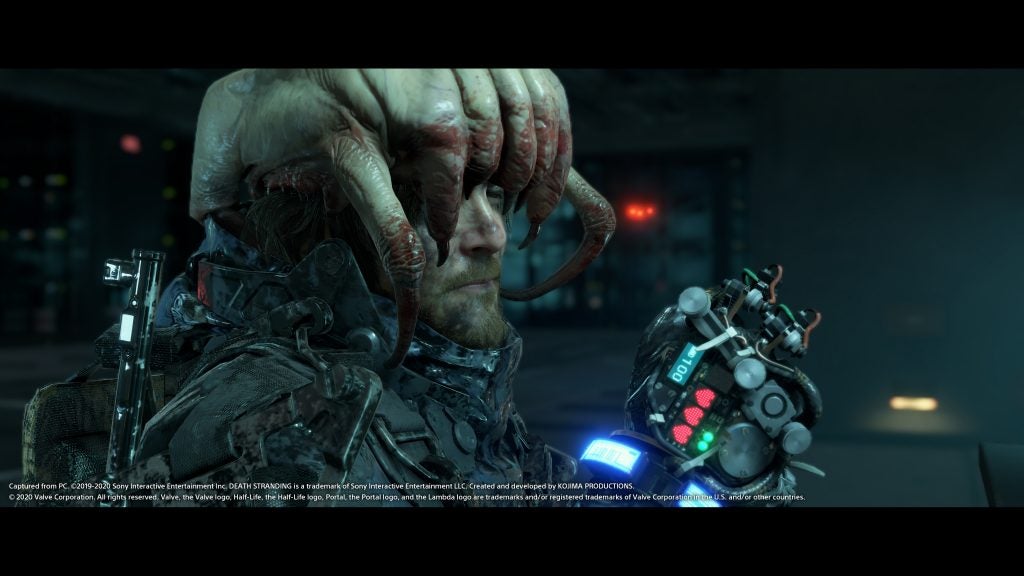
Kojima Production has ensured that all the additional features and updates added to the console version are included here from the outset. This includes a fully-featured photo mode that I struggled to pull myself away from in the opening hours. It’s one of the best I’ve ever seen, allowing you to customise endless options such as character poses, colour tint, borders, depth of field and more. Many photo modes are basic to a fault, but this one is anything but.
This is also the first time we’ve seen the Decima Engine run on anything outside of a PlayStation console. Used to power both Death Stranding and Horizon Zero Dawn, this is an exciting glimpse into what this technology will be capable of on more powerful hardware such as high-end gaming rigs and the upcoming PS5. Of course, this is an older version of the engine, but it’s capable of more than ever before, and perhaps opens a case for why console exclusives should be relegated to the past.
PC gamers have some fun cosmetic goodies and exclusive missions based on Half-Life to look forward to, which have all been developed in collaboration with Valve itself. It’s excellent to see those on this platform receiving a few extra bonuses after waiting so long. Kojima Productions has taken this port very seriously, which is honestly a breath of fresh air when many PC ports are just lazy adaptations of their console cousins.
Verdict
Death Stranding is still essential now it’s arrived on PC, offering the best version of Kojima Production’s weird and wonderful masterpiece. It’s unconventional gameplay and wacky narrative remains polarizing, but it’s certainly more relevant than ever before in how it depicts a society broken apart by an invisible threat they sadly have no control over. If you have a machine capable of powering this epic adventure, it’s more than worth jumping into.
Original review follows:
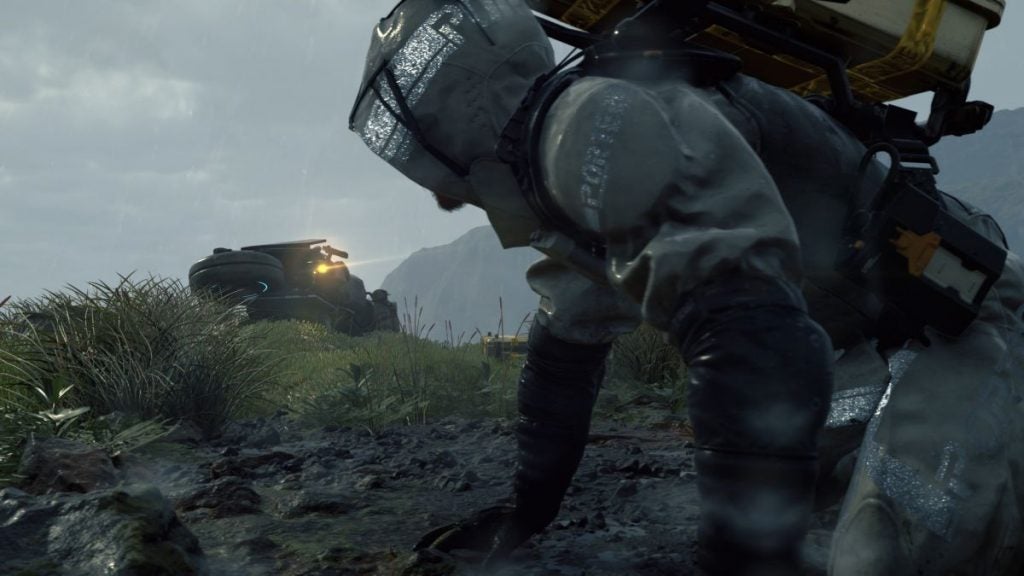
Death Stranding is honestly unlike anything I’ve ever played before. From the minds behind Metal Gear Solid comes a courageous, strange and masterful experience which asks some important questions with all the subtlety of a nuclear explosion.
Kojima Productions has created a sprawling narrative adventure which serves as a purposeful commentary on division in modern society, citing the political divide and complacent attitude of our current climate as the reason for its worlds’ descent, albeit with a harrowing supernatural twist.
A cataclysmic event has left America segregated, with small bastions of civilisation held up in gated communities, kept away from the outside world which is filled with paranormal creatures known as BTs. Reality in the outside world constantly teeters between life and death. The only souls courageous – or foolish – enough to venture out are Porters, people responsible for delivering precious resources across the continent.
Sam Bridges is one such Porter. Portrayed by Norman Reedus, he hides away a horrid past and plenty of emotional baggage that is explored to tremendous effect throughout the campaign. In the opening hours, a routine delivery develops into a pilgrimage, with the entire world left hanging in the balance. Sam is tasked with piecing the country back together, visiting different outposts and encouraging them to join the ‘United Cities of America’ – a coalition of sorts that can share knowledge and resources across a vast, futuristic network.
Related: Best PS4 Games
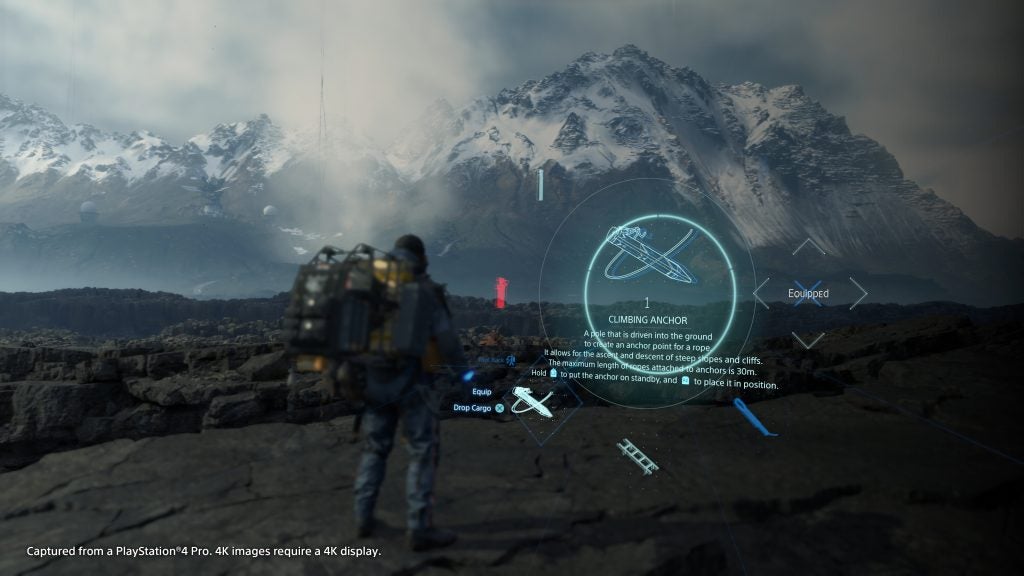
You’ll need to use everything in your power to navigate this world – no matter how absurd the means might be
You’re hammered over the head with “bringing the world back together” and how it’s the only way of saving humanity from extinction, while faced with a civilisation which has descended into a shell of its former self, with people too afraid to even communicate, scared that their loved ones will simply be lost to the supernatural horrors that await outside.
In the opening chapters it’s made clear that the ‘Death Stranding’ was an apocalyptic event that left the world in tatters. If you pass away and your body isn’t cremated, it will cause a devastating explosion known as a ‘Void Out,’ an event of nuclear proportions that infects the surrounding area, making it practically uninhabitable.
Death Stranding is positively drenched in mythology, obsessed with piling details on the player regarding its history, characters and ensuring there’s a solid context for all of its frankly ludicrous developments. Hideo Kojima is a not subtle storyteller. This is the man who made Metal Gear, and this legacy shines through in every aspect of his new creation. Here, a heavy-handed approach arguably helps, making otherwise eclectic ideas simple to understand with deftly placed points of exposition.
I’ll try not to delve too further into the nitty-gritty of it all, partly because of spoilers, and also I run the risk of driving myself insane with all the inevitable convolution. There’s talk of multiple universes, teleportation and goodness knows what else that you’ll discover for yourself, and if you’ve a penchant for the bizarre like I do, you’ll adore every unusual minute of it. But how does Death Stranding play? This is a question that has alluded fans since its reveal, and now the answer is finally out there. In short – it’s unlike anything else.
Related: Cyberpunk 2077
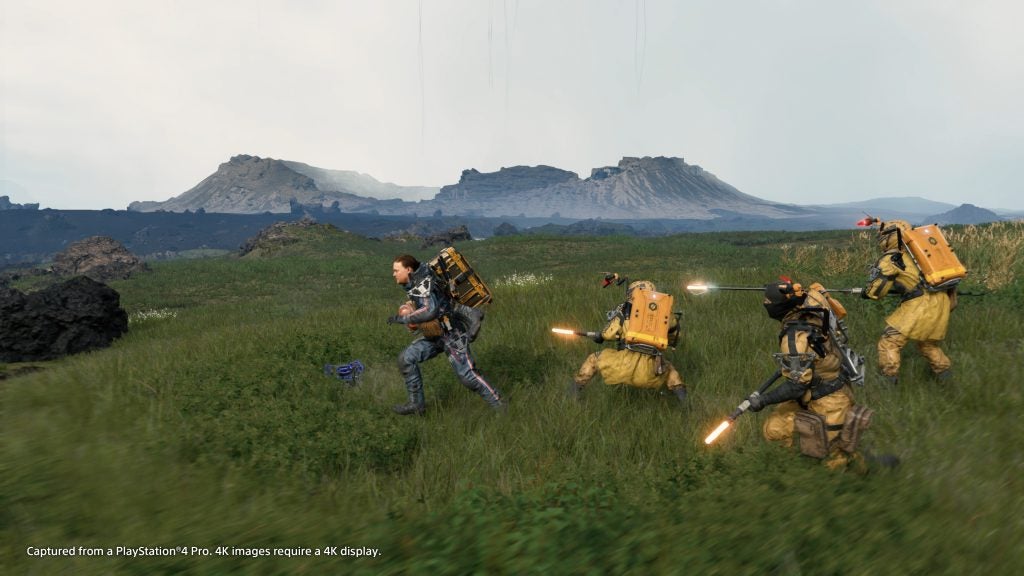
MULES are a nightmare to deal with, proving to be a worthy test of your survival skills
Sam Porter is a courier, so by nature a lot of his time will be spent delivering packages across the broken plains of America. Without mechanical context this probably sounds incredibly boring, but Kojima Productions has done a stellar job ensuring every little system informs and enhances a rather pedestrian activity into something truly special. Imagine if Solid Snake took up a part-time job at Royal Mail and you’re about halfway there, although even that is selling Death Stranding spectacularly short.
In order to reconnect the United Cities of America you must visit a variety of cities and outposts spread across the continent, completing missions to convince oftentimes stubborn individuals to join your alliance. This normally involves quests that require the delivery of vital resources, or venturing into an area undoubtedly filled with spooky monsters to retrieve an important item. During all of this the overarching narrative moves along, characters portrayed by the likes of Guillermo Del Toro and Lea Seydoux popping up in some utterly gorgeous cutscenes to fill you in on vital details.
The transportation of packages is often defined by two things – the route you’re taking across the open-world, and the overall weight of materials – two factors which will transform each approach. Too many items will weight Sam down, slowing movement and his reactions to oncoming enemies or obstacles. This can be remedied by holding the shoulder buttons to restore balance, making it easier to hop over jagged rocks or up steep inclines. In theory, no two players will experience missions in the same way, because Death Stranding’s world is so vast and malleable that split-second decisions are being made constantly.
Do I venture up this precarious mountain and shorten my journey or go around, taking a little longer but risking the chance of encountering BTs? The objective of each quest and exactly what you’re carrying constantly shift priorities, twisting an otherwise boring premise into one that I found infinitely engaging. It’s excellent, and only grew better as I opened each new mechanical gate that stood before me.
Related: Pokemon Sword and Shield
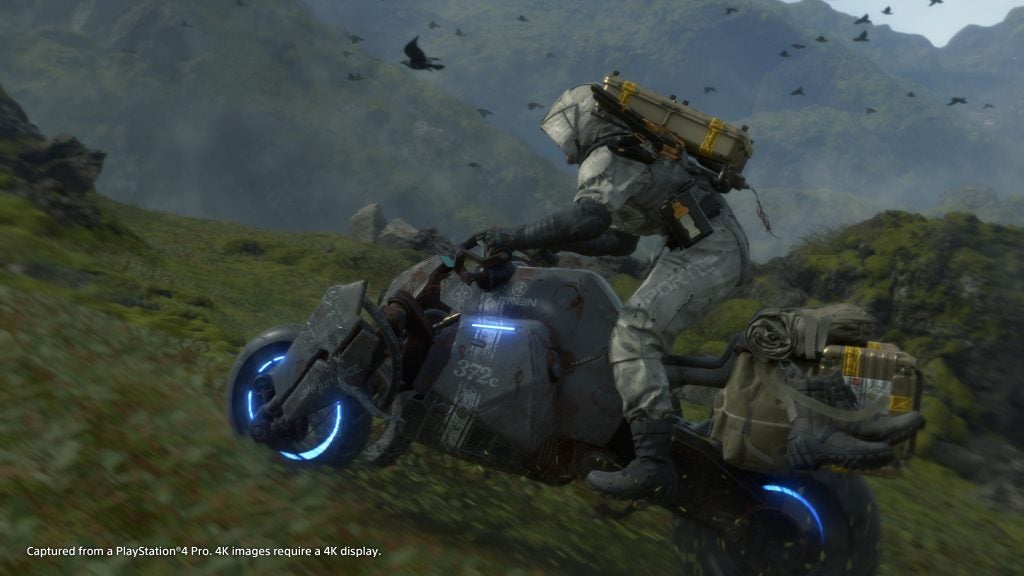
You won’t unlock the ability to craft vehicles for a number of hours, but once you do, it’s pretty transformative
Sam’s misadventures in the gig economy are just scratching the surface of Death Stranding, and there’s so much more to delve into. Timefall is the world’s form of rain, which rapidly ages anything it touches. Get caught in the rain without protective clothing and you’ll become dust in a matter of minutes, and the same applies to your equipment. Packages will degrade in timefall, meaning there’s an incentive to complete deliveries quickly, or take shelter in the crevices of mountains or makeshift facilities spread across each region.
The constantly shifting weather is a sight to behold as it bounces against Sam’s back and the glistening terrain, dynamically transforming the landscape in some fascinating ways. As a result, you’re forced to adjust how the world is approached, either through navigation or the threats that await therein. It’s a shame there’s no concrete day/night cycle in place, since this could have made things all the more terrifying.
Timefall is often a calling card for the BTs, the supernatural creatures fighting between this world and the afterlife, stranded in an ethereal place known as ‘The Beach.’ It’s all a bit confusing, but Death Stranding does a stunning job of justifying all of its nonsense. Encounters with these things are genuinely horrifying, punctuated by subtle sound cues and a claustrophobic sense of dread, a significant feat given you’re in the middle of a sprawling open world. However, you aren’t completely defenseless, largely thanks to BB.
BB – short for Bridge Baby – is a newborn trapped inside a pod which is strapped to your chest. It has a connection with the afterlife, meaning it is capable of detecting the presence of monsters nearby. This is made clear by small cries coming from the Dualshock 4 speaker, indicating how close you are to the invisible nasties. Even after 30 hours, these moments are still nail-biting, since I knew a single mistake would awaken a threat of deadly proportions.
Related: Everything we know about PS5
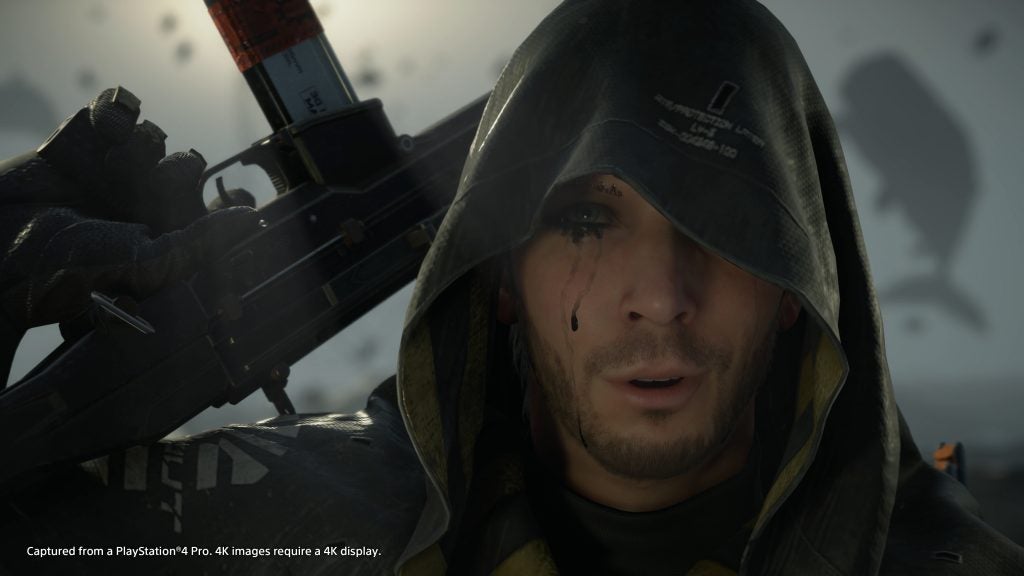
Troy Baker’s performance as Higgs is excellent. He’s dark, devious and chews the scenery every moment he’s on screen
This crafty infant isn’t your only means of defense, though. Sam also has a scanner which can be activated at the touch of a button, scanning the surrounding area for locations and resources while also revealing the outlining of nearby threats. You’ll come across rogue terrorists on your travels alongside MULES – mercenaries who purposely target couriers like Sam to steal his packages. They’re a nuisance, but easy enough to sneak past or deal with in one-on-one confrontations.
Much like Sam, they aren’t trained for combat, and don’t want to kill you. Oftentimes it’s easy to hurl a rogue suitcase their way or a few punches, knocking them unconscious before sprinting in the other direction. I didn’t pick up a firerarm for roughly 12 hours, and experiencing a dark, foreboding world like this that doesn’t drive you to kill is refreshing. Death has consequences, untouched corpses only adding to the hellish landscape Sam and friends are forced to call home – so I never added to it, knocking foes out and moving on with my day whenever possible.
Unfortunately, this means when combat does become a focus it can feel finicky and unpolished, particularly in a handful of later boss battles. I won’t spoil anything, but having to deal with massive beasts with a limited number of weapons while also battling with the camera isn’t the most fun. Fortunately, these encounters are so few and far between it’s hardly a dealbreaker. The narrative context surrounding them more than make up for any shortcomings in my eyes. That, and firing a gun filled with your own blood to take out supernatural spectres is very, very badass.
Much like Metal Gear Solid 5 or The Legend of Zelda: Breath of the Wild, Death Stranding feels defined by player choice. Every quest is an exercise in unpredictability, taking you on a rollercoaster of sudden twist and turns dictated by an innumrable number of factors. Each delivery is a triumph in its own right, whether it takes 10 minutes or several hours. When played offline its wonderful, but once incorporated with the game’s online elements, it’s something else entirely.
Related: Xbox Series X
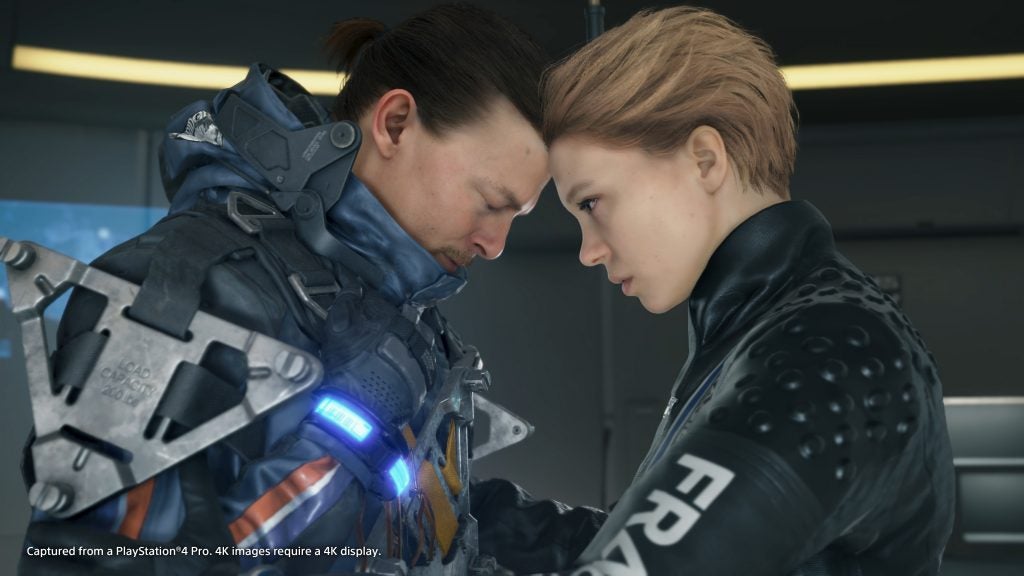
Norman Reedus is great as Sam Bridges, his performance distant in a way that really works for the character
Ever since its reveal, Kojima Productions has stressed the theme of connecting with others and how integral it is to Death Stranding. From a distance it sounded like pretentious nonsense, but in practice it’s an innovative, fully-realised system I absolutely adore. Much like Dark Souls and countless other games this generation, you can leave messages for other players in the form of signs scattered across the world. You might convey the distance of nearby threats or simply leave a wholesome message of ‘good luck’ to other couriers.
It’s so well done, with each region coming alive with new signs the second you’re connecting to the Chiral Network. You can also build structures in the form of postboxes, generators or timefall shelters for players to utilise in their own worlds, all for the hope of receiving ‘Likes’ – a virtual currency which brings players together. These can be applied to signs, structures and individual actions performed by couriers, resulting in a growing level which provides you with greater attributes and other talents.
Popping your scanner and seeing a flurry of markers appear on the horizon diversifies your strategy, opening up countless directions for moving forward. If you happen to lose any vital resources or cargo while on a mission, it can be picked up by other players and delivered back to you. This sense of co-operation is echoed throughout all of Death Stranding, whether it’s through using another porter’s ladder to climb a mountain or them hurling precious weapons at you during a battle. It enhances everything while intertwining perfectly with the narrative themes.
You’re bringing this world together, and to achieve this you need to work alongside other players to achieve such lofty goals. It’s preachy and unsubtle to the point of hilarity, but given how averse blockbusters are to discussing politics nowadays, Hideo Kojima is already sitting atop the mountain. Speaking of, you’ll be climbing a lot of those in Death Stranding.
Related: PS5 vs Xbox 2
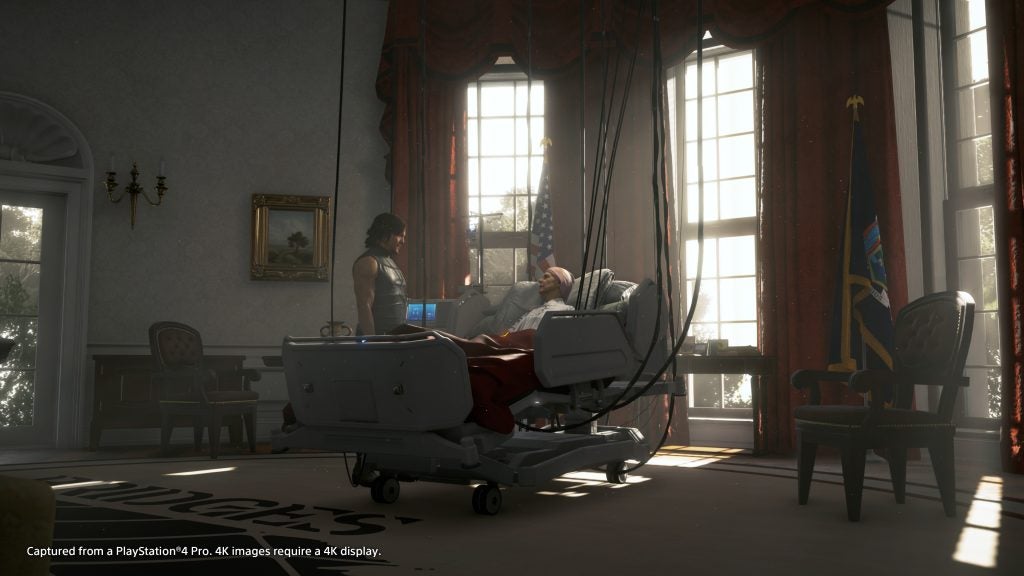
This is a game by Hideo Kojima, so expect plenty of cutscenes throughout the long campaign (some even take place in The White House)
One of the most unusual elements is the private room, a hub area of sorts you’ll return to for resting after a mission or experience story sequences throughout the campaign. It’s bright, futuristic space that fills with trinkets and equipment, and by the end it’s absolutely crawling with items.
While here, you can make Norman Reedus shower, use the bathroom and even stare into a mirror to make an absurd number of weird impressions. It feels like a humanoid tamagotchi, and your decision on if that’s a good thing depends on your tolerance for Hideo Kojima’s special brand of bizarre.
You can find private rooms crafted by other players across the open-world, offering a temporary shelter in the face of danger for recharging all your precious resources. Venturing through Timefall and BTs is a dangerous game, and finding a place to call home amidst all of the chaos is a blessing I learned to appreciate again and again throughout Death Stranding. Cooperation feels wonderful, whether you’re returning packages to their owner or saving other porters from certain death.
Verdict
Death Stranding is unlike anything else out there in the gaming landscape right now. It’s huge, innovative and utterly unashamed in what it wants to be. Kojima Productions is heavy-handed in its implementation of modern political themes, but they tie into the narrative and involve the player in ways that feel beautifully compelling- resulting in one of the strongest final acts I’ve seen in some time.
It’s going to be polarizing, glacial in its pacing during the opening hours as it expects players to delve into its mechanics, finding out what makes it tick while bonding with other couriers through a personal network of massive significance. I laughed, I cried and I grinned like a stupid idiot at the absurdity of it all. But by the end, I was left wanting more. Death Stranding is one of a kind, cementing itself as a weird, wonderful masterpiece.


